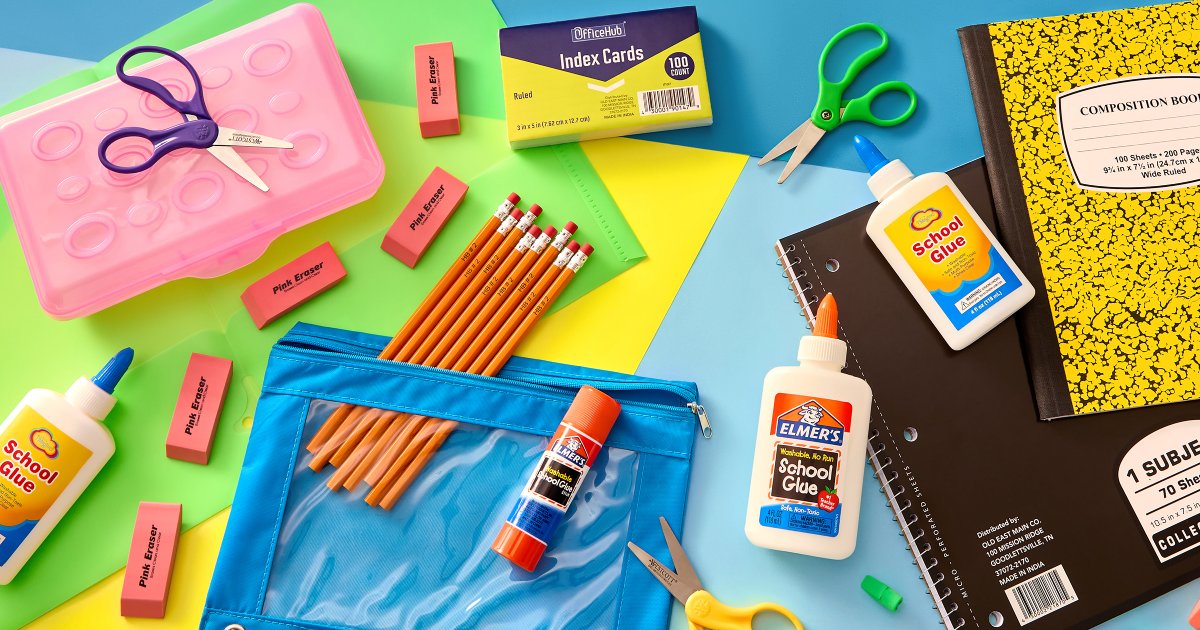Tariffs Weigh on Back-to-School Spending

By Mark Seavy
U.S. back-to-school (BTS) spending is forecast to rise this year, but the magnitude of that increase is being impacted by tariffs and price increases weighing on consumer spending.
For the most part, consumers reported they are making BTS purchases earlier in July (moving up from a more typical late August or early September timeline). Sixty-two percent of the 500 consumers surveyed by Coresight Research said they would start shopping earlier than August, compared to 53.9% in 2024.
The result has been some variation in sales forecasts. Coresight, for example, is projecting a 3.3% increase in BTS sales to $33.3 billion. Deloitte, meanwhile, is predicting flat sales at $30.9 billion, with parents spending an average of $570 per student versus $586 in 2024 (and down 7% from 2021). The Deloitte survey covered 1,203 parents with at least one child in grades K-12. But a separate Harris Poll of parents with kids in K-12 or college found that spending per student would increase $200 from a year ago to reach $741.
This variance in forecasting is partly tied to the ever-changing tariffs the U.S. government plans to impose on imported goods. The proposed rates have varied greatly since being announced in early April. Most recently, President Trump announced that 30% tariffs would be levied against the European Union and Mexico effective August 1. Earlier this month, President Trump unveiled a new round of proposed tariffs that replaced those that expired on July 8.
About 70% of those surveyed by Coresight said inflation would limit their BTS spending. Sixty-seven percent of them were aware in June of the potential for price increases.
Indeed, consumer products company Helen of Troy, which sells under the Hydro Flask (water bottles), Braun (thermometers and shaving accessories), licensed Vicks (vaporizers), and other brands, will impose tariff-related wholesale price increases by an average of 7-10% by late summer with the highest being 15%, interim CEO Brian Grass recently announced.
As a result of price increases and the related drop in discretionary spending, the categories most likely to see cutbacks in purchases are apparel and school supplies, according to Coresight.
But many other businesses have held off on raising prices as they reduce their inventories or absorb some of the higher costs to avoid deterring customer spending.
“Tariffs are top-of-mind for many families this year, since they can affect prices for common back-to-school purchases like clothing and computers,” said Sara Rathner, a personal finance analyst at NerdWallet. “This is a good year to plan ahead to allow for comparison shopping and spread out the costs of everything you need to buy.”
As part of that comparison shopping, 39% of those surveyed by Harris said they would likely choose brands different from those they purchased a year ago due to price increases.
The shift in brand choices will also apply to retailers. Consumers are expected to make BTS purchases from retailers different from those they chose last year, Coresight reported. And 35% of the Harris Poll survey respondents said they would change retailers for BTS shopping this year.
Among the retailers expected to benefit from these shifts are Target and Walmart, along with dollar stores (Dollar General and Dollar Tree) and discounters (Ross Stores, Burlington, and T.J. Maxx), all of which offer “stable pricing, broad assortments, and value-focused options that help consumers navigate tariff-driven inflation,” according to Coresight.
Many retailers will likely buy goods from suppliers on a “replenishment basis” rather than importing them directly from China to avoid a 30% tariff, Grass said.
“In some cases, our price increases are not fully covering the tariff impact and so retailers can arbitrage and pick the one [replenishment vs. direct import] that’s more beneficial to them,” said Grass, whose company is expected to incur $14 million in tariff-related costs this year. “There’s been a lot of pull forward [of inventory by retailers] and then a lack of replenishment orders. That must be stabilized at some point. We’re assuming that will happen in the second half of the year.”




